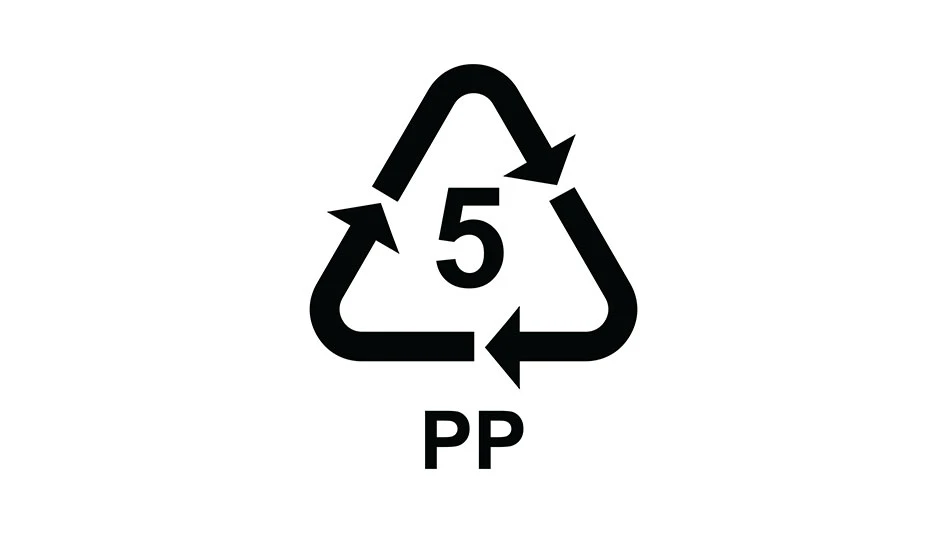|
Infoshred at a Glance Principals: Owner Stacey DiPiazza and General Manager Jack DiPiazza Location: East Windsor, Conn. Number of Employees: 34 Equipment: An AMS 150000 Magnum Series cross-cut shredder, AMS 1250000 shredder and AMS 750000 product destruction machine for hard drives and nonpaper media from Ameri-Shred, Alpena, Mich.; a disintegrator for microfilm, microfiche, pill bottles and ID cards from Security Engineered Machinery, Westboro, Mass.; and a fleet of 22 trucks, which includes four shred trucks from Shredfast, Airway Heights, Wash. Service Area: Connecticut, Rhode Island, Massachusetts, and parts of New Hampshire and New York Services Provided: Records management, media vaulting, on-site destruction, off-site destruction, product destruction, media disintegration, hard drive and electronic media destruction and electronics recycling |
Stacey DiPiazza believes in going to extremes when it comes to customer service. The owner of Infoshred, East Windsor, Conn., and her husband, Jack, the company’s general manager, take a hands-on approach to their business. “What we love about being owner-operators is that we can make anything happen,” Stacey says.
Since Stacey purchased the company in 1997, the DiPiazzas have made a lot happen. Infoshred has expanded beyond off-site destruction to provide a range of records and information management (RIM) services, including on-site destruction, records management, media vaulting, product destruction, media disintegration, hard drive and electronic media destruction and electronics recycling. Today, the company serves more than 2,000 clients with its secure destruction services, shredding roughly 800 tons of paper per month, the DiPiazzas say. Infoshred also provides records storage and media vaulting services to more than 50 clients from its 50,000-square-foot records storage facility in East Windsor.
“Infoshred believes to be successful in today’s economy flexibility is key,” Stacey says. “We want to be our customers’ source for ‘life-cycle records management.’”
Rooted in Recycling
Infoshred was formed in 1993 as a division of South Windsor, Conn.-based Recyclers LLC, which Stacey’s father owned. Stacey says she was the first employee of Infoshred, which was established in response to client demands for secure document destruction and recycling services.
“My father bought a little shredder and put it in the back of the facility,” she says of Infoshred’s origin. “I started the business from the ground up with one client.
“Being in recycling,” Stacey continues, “I had a good understanding of the document destruction business and how it differed from recycling.” She describes recycling as “an open system” and secure destruction as “a closed system.”
Jack says Stacey’s experience in recycling taught her how not to do things at Infoshred. He adds, “It taught her right from wrong before there were NAID standard,” referring to the certification program established by the National Association for Information Destruction, Phoenix.
In 1997 a waste hauling and recycling business acquired Recyclers Inc., and Stacey’s father asked her if she would be interested in buying Infoshred. She was. The company was organized as Infoshred LLC, a minority/woman-owned business later that year.
Infoshred added on-site shredding in response to market demand, Jack says, though off-site shredding represents 35 percent of the company’s revenue stream, compared with 12 percent for on-site service. (Paper sales account for 26 percent of Infoshred’s revenue, while records storage accounts for 16 percent.)
Infoshred expanded into records storage in 2003 in response to client demands for secure document management services.
Branching Out
Jack says Infoshred looked for a records management company to partner with when customers requested that service. “We couldn’t find a mutually beneficial relationship,” he says.
“In records storage, very few companies had the same security requirements” as companies certified by NAID, Jack says.
|
The Gift of Giving Stacey DiPiazza’s gift to herself on her 40th birthday allows her to give to other people. The owner of Infoshred, East Windsor, Conn., and her husband, Jack, the company’s general manager, set up a donor advised fund, The Giving Tree, at the Hartford Foundation for her birthday. The fund supports charitable causes in the Greater Hartford, Conn., region. In addition to establishing The Giving Tree, Stacey, who describes herself as “passionate about philanthropic works,” has been a Catalyst with the Hartford Foundation of Public Giving since 2009 and was awarded the Visiting Nurse Association (VNA) Health Care Philanthropist of the Year award for her activities on the group’s fundraising committee, her donation of in-kind shredding services and her leadership with the Taste of Hope wine event to benefit the VNA’s hospice program. |
Therefore, when space became available in the warehouse Infoshred rented, the DiPiazzas decided to add the service.
“We applied the security model from shredding,” he says of Infoshred’s approach to records management.
“It’s been a nice complementary service,” Stacey says, adding that Infoshred built its records management business initially by calling on clients of its destruction services division, parlaying the trust the company already had established with its clients into an additional revenue stream.
True to the company’s history, Stacey and Jack say they will continue to expand Infoshred’s services and operating region.
“We are always looking for ways to expand our business and improve ourselves,” Stacey says. “Historically, Infoshred’s growth strategy has been through new product offerings and geographic expansion at a pace that does not affect our core business values of security and extreme customer service. Future expansion may include imaging services and electronic data management.”
Infoshred has traditionally experienced the most growth from year to year in its document destruction division. Jack says 18 percent annual growth was common until the last couple of years, citing the maturing of the secure destruction industry and the general economy as factors influencing the decline in growth. He says he expects future growth to come through hard drive and electronic media destruction. However, he adds, “As storage devices become larger and more powerful that will flatten.” This trend also will affect the company’s media vaulting business, which is why Infoshred is looking into providing cloud-based storage services, Jack says.
Current Challenges
In addition to the changing nature of how information is generated and stored, the RIM industry faces a number of challenges, as do business owners in this segment.
Stacey says she finds the dynamic nature of small business ownership an ongoing challenge, but it is one that she and Jack are meeting with grace. “On any given day you may be a shredder mechanic, truck driver or customer service manager,” she says. “As our business has grown and we have added staff to alleviate some of these pressures, new pressures arise.”
She continues, “Additionally, competition has become fierce. When we began, there were four competitors in our marketplace and now there are too many to count. We are always looking at ways to improve our efficiency and maintain our market share.”
Jack says he and Stacey try to avoid debt, paying off their business assets as quickly as possible and saving as much money as they can. “This conservative approach helps us to weather storms,” he says, as in the case of the company’s roof collapse in early 2011. (See “Disaster Recovery,” p. 22.)
In the face of the competition, Stacey says Infoshred focuses on its core values as a business, which she describes as “excellent service at a fair price” and building a connection and rapport with the company’s clients. “When you build that connection, they are less apt to leave,” she adds.
Stacey and Jack say they see the current focus among some destruction companies on lowering pricing to capture market share as dangerous to the industry.
“Many of the players in today’s marketplace are living for the moment,” Stacey says. “They are basing their pricing models on current paper prices and not on five-year trends. We see competitors overlooking the fundamental business practice of developing pricing based on your operational costs not on what your competitors are doing.”
She continues, “The major issue facing our industry is the fact that our industry is changing from a security industry to a commodity. This is driven by tough economic times, inflated paper prices and shredding vendors selling on price.”
Jack adds that secure destruction service providers need to understand what their costs are and what they want their business margins to be rather than focus on capturing market share at the expense of the industry as a whole.
Sponsored Content
Redefining Wire Processing Standards
In nonferrous wire and cable processing, SWEED balances proven performance with ongoing innovation. From standard systems to tailored solutions, we focus on efficient recovery and practical design. By continually refining our equipment and introducing new technology, we quietly shape the industry—one advancement at a time.
By offering a range of RIM services in addition to quality service at a fair price, Infoshred may be able to reduce the effect of commoditization of the industry, Stacey and Jack say.
“We haven’t been in the industry this long by letting the industry drive us,” Stacey says. “We embrace that we are a small local business and, while we manage some national accounts, our expertise lies in servicing regional businesses.”
|
Disaster Recovery A snow storm in February 2011 could have damaged East Windsor, Conn.-based Infoshred LLC’s business more acutely than it did had it not been for the company’s disaster preparedness plan. While the roof of the building that housed Infoshred’s records storage facility collapsed under the weight of the snow, the company continued serving its clients thanks in part to its disaster preparedness plan. To ensure its clients’ materials were protected, Infoshred hired a security service to guard the information while arrangements were made to move the documents to a more secure location. The company rented a facility to house its records management operations while construction on its new storage facility began. Owner Stacey DiPiazza says she wrote Infoshred’s disaster preparedness plan when the company was very young and has been updating it regularly. “I can’t overemphasis the importance of that document,” she says. “If we did not have it, we would not have been as efficient in our response.”
Infoshred also learned the limitations of its insurance coverage throughout the ordeal, Stacey and Jack say. “We wrote a lot of checks out of pocket,” Jack says, adding that Infoshred’s insurance coverage has changed greatly in the time since the roof collapse. As a result of the roof collapse, Stacey says the company also learned the importance of being open with its clients. “We kept them informed throughout the process,” she says. “We let them know we were standing behind them.” That dedication meant picking up the tab for any document restoration work that was required, Jack says. “It worked to our benefit,” Stacey says. “We have not lost any clients.” The new 50,000-square-foot records management facility was completed nearly a year to the date of the roof collapse. To safeguard against future roof collapses because of snow, Infoshred’s new building includes a permanent ladder leading to usable roof access for efficient snow clearing as well as heated gutters and downspouts, Jack says. The new facility not only meets, but exceeds code requirements, he adds. Jack says the cost of these additional measures was minimal compared with the feeling of security they instill in the company and its clients. “We are very confident in this new structure but even more confident in our ability as a company to collectively rise above any challenge that is put before us,” he adds. |
The author is editor of Storage & Destruction Business magazine and can be contacted at dtoto@gie.net.
Get curated news on YOUR industry.
Enter your email to receive our newsletters.
Latest from Recycling Today
- SWANA report addresses curbside recycling contamination reduction
- NWRA accepting hall of fame nominations
- Nucor says current quarter will offer leaner profits
- Bantam Materials hits 20th birthday
- Closed Loop Partners deploys $10M loan to GreenMantra Technologies
- Petroleum, auto industry EPR compliance program approved in Colorado
- Batteries Plus, Dallas Cowboys launch multiyear partnership
- rPlanet Earth closes its doors



 Jack DiPiazza, Stacey’s husband and the general manager of Infoshred, says the company tests it disaster preparedness plan yearly and revisits it every time there is a major change to the operation.
Jack DiPiazza, Stacey’s husband and the general manager of Infoshred, says the company tests it disaster preparedness plan yearly and revisits it every time there is a major change to the operation.




